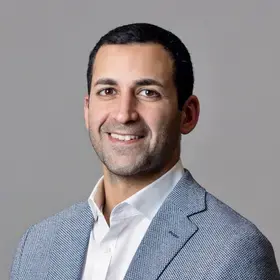Assaf Kedem has worked in communications for some of the biggest financial services firms in the world – JPMorgan Chase, Merrill Lynch, Morgan Stanley, and others. Wanting to broaden his skill set and better understand the future of communications, he enrolled in the Strategic Communications master’s program at Columbia University (now known as the Executive M.S. in Strategic Communication), graduating in 2013. Since 2014, he has worked as a Senior Writer at OppenheimerFunds in New York City.
We spoke with him about how he uses the lessons of strategic communication in his work, what communications looks like at a financial services firm, and how the program helped foster his creativity.
What do you do in your current role?
I’m a communication strategist and senior writer who supports PR, internal/external, and executive communications at OppenheimerFunds. What I love about my job, as a writer, is that every new assignment presents a learning opportunity. I also draw satisfaction from being able to phrase the thoughts of our talented financiers in engaging and accessible terms, and to bring flow, structure and cohesion to their perspectives as I lay them out in published form.
What were you doing before you entered the program?
I had been working in communications for 14 years before joining the program. But much of what I knew about communication I had to divine by intuition or discover, often painfully, through trial and error. From one work assignment to the next, and with my sights set squarely on meeting business objectives, I had never had a chance to step back and obtain a broader and more critical frame of reference for my craft. My job had also conditioned me to follow particular approaches to my assignments, some of which were formulaic. I felt I could benefit from the additional perspectives—and from a measure of imagination and creativity—that a classroom setting could help foster and inspire in me. That is why I pursued this degree.
You were working while you were enrolled in the program. In what ways did you implement the lessons from your classes in your job at the time?
I was asked, for the first time in my career, to write the annual socially responsible investment report of TIAA-CREF, a multi-billion dollar investment firm. This report is one of the firm’s most visible communications to internal and external stakeholders and regulators. As fortuity had it, I had just completed the program’s course in organizational strategy and leadership, during which I had learned about concepts in corporate social responsibility. I applied those concepts in the formulation of the report.
What do you think were the most valuable parts of the program for you?
As a communicator, it’s often easy to lose sight of the broader view when you’re dealing with the very granular details of a particular assignment. But this program helped me gain that view—and think more strategically and contextually about the implications across multiple organizational disciplines and communication channels.
How is communications in the financial industry different from communications in other industries? I imagine the stakes are much higher.
Indeed, the stakes are higher, if only because there’s a tremendous amount of capital at stake. Finance is mainly service-based, as opposed to product-based. Its proposition is chiefly intellectual—not physical. And since finance involves a great deal of trust and responsibility, reputation is paramount. I find that, for this reason, the financial industry deeply values the function of communication and places a high premium on it.


